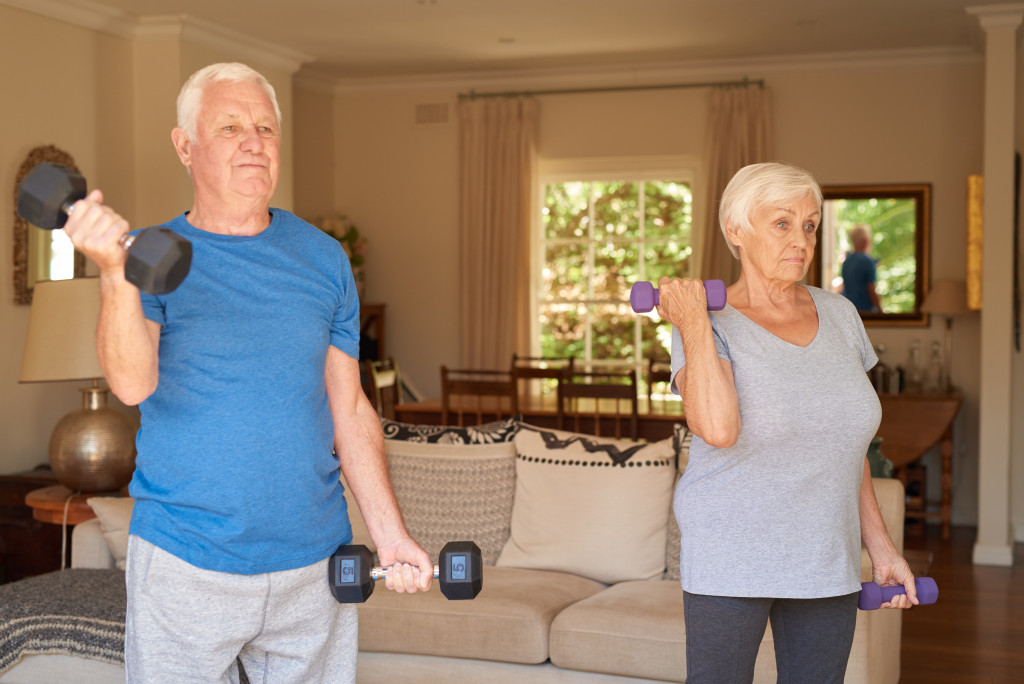Contrary to what many older people believe, aging doesn’t give them a free pass not to exercise. In fact, experts suggest that they need at least 2.5 hours of moderate physical activity each week.
But it is also clear that several older individuals, particularly 65 years old and above, do not exercise enough. If you’re one of these people, then perhaps these science-backed facts will hopefully change your mind:
1. Almost All Types of Exercises Are Okay for Seniors
Based on studies, there’s no such thing as a “special type of exercise” for seniors. They, however, can be modified according to the needs and present health conditions of the person.
In general, one hour of walking can already reduce the risk of disability among this population, according a Northwestern University research. To be specific, it may decrease the odds of developing osteoarthritis, a form of joint inflammation.
But even for those who are prone or are diagnosed with arthritis, walking is also beneficial since it’s low-impact. It is not hard on the joints and muscles, so you are less likely to feel pain after.
Another exercise that may help ease joint pain is dancing. In a study by Saint Louis University Medical Center, those who moved to upbeat music decreased their intake of pain medications by as much as 39% compared to 21% among those who didn’t dance.
Moreover, dancing may help improve gait, which scientists now use to determine an older person’s risk of immobility and fall. Although it didn’t make them walk way faster than before, the researchers still noticed a change in speed.
Even a slight difference can count toward improving a senior’s ability to be independent and functional, the researchers explained.
For many seniors, though, aging affects appearance, which may decrease their self-confidence to exercise in public. If you’re conscious of how you look now, you can skip the gym and exercise in the yard. Call a fence contractor to help you guarantee privacy.
2. Engaging in More Physical Activities Can Lower the Risk of Dying
When it comes to exercise, the rule remains the same: quality over quantity. But if you can push yourself harder and do more, that may work to your advantage.
The American Heart Association (AHA) revealed in a 2020 study that older adults are over 60% less likely to die of any possible cause if they engage in vigorous or moderate exercises for at least 150 minutes weekly.
Another research that appeared in the Journal of Geriatrics Society concluded the same thing. For the study, the team worked with women until the age of 99 who were considered either overweight or obese. They then measured their level of physical activity using a fitness tracker.
Upon analyzing their data when the participants died, the researchers discovered that those who engaged in more physical activities also lowered their risks of dying than those who moved less regardless of the cause of death.
The good news is you need not be huffing and puffing and put yourself at risk if you have a chronic disease just to perform vigorous or moderate exercise.
The AHA said that older women who walked between 2,100 and 4,500 steps can already stave off the odds of dying of cardiovascular events like a heart attack or stroke by over 30%.
What these studies are trying to say is to spend less time on the couch and more time doing something that requires physical activity. It can be tending the garden, arranging the furniture, climbing up and down the stairs, or walking around the yard and neighborhood. Just move!
3. Exercise Is Just as Good for the Mind as It Is for the Body

Although the actual relationship between better mood and exercise isn’t clear, some experts theorize that the secret is in the skeletal muscle.
When a person exercises, they may turn on a specific gene in the skeletal muscle. This gene then influences the metabolic pathway that contributes to a better mood. Quality mental health lowers the risk of depression.
But skeletal muscles can change over time. Aging, for instance, can lead to muscle loss. Does this mean then the effect of exercise on mental health also changes? The answer is no, according to McMaster University research.
In the study, older participants performed high-intensity interval training once a week and strength training twice weekly. Within three months, they have already found an enhanced gene expression in their skeletal muscles after analyzing their blood samples.
The results matter because the association between depression and aging is strong. The findings may suggest that exercise can be one of the effective strategies to boost feelings of pleasure and mental health among older individuals.
Exercising does come with risks, but with professional guidance, you may reduce or even eliminate them. The most important thing is you don’t miss out on the benefits, which outweigh the challenges.

